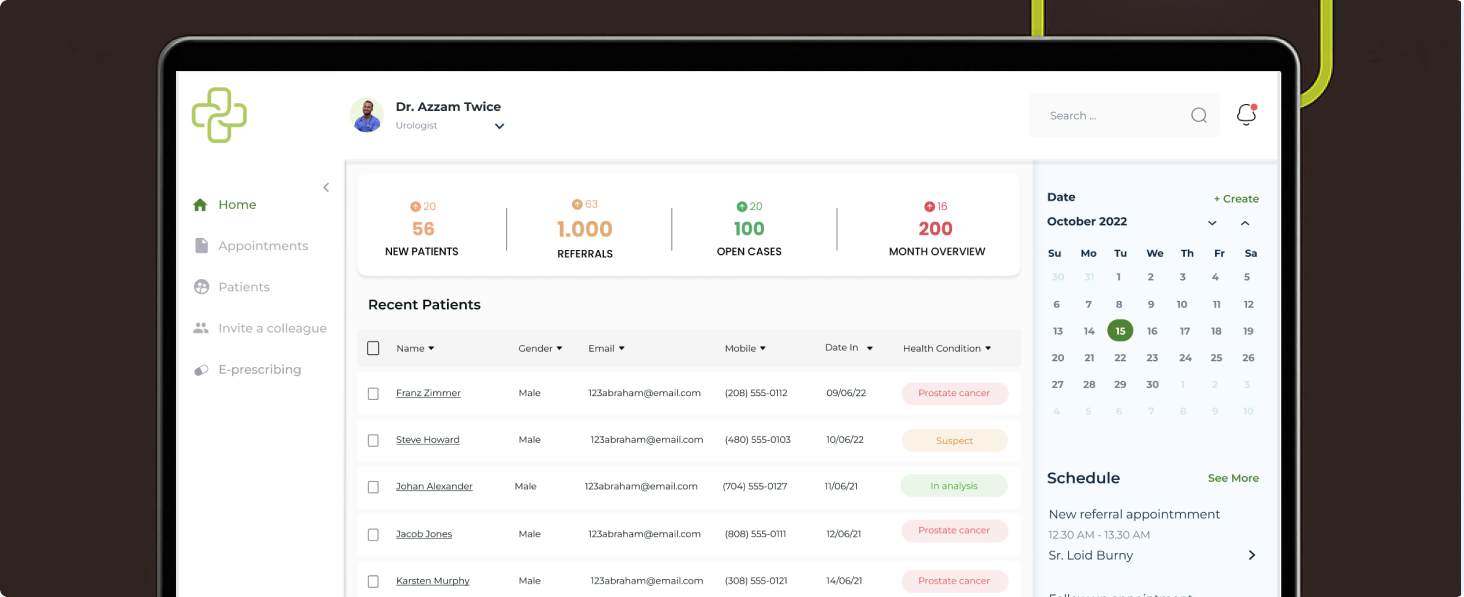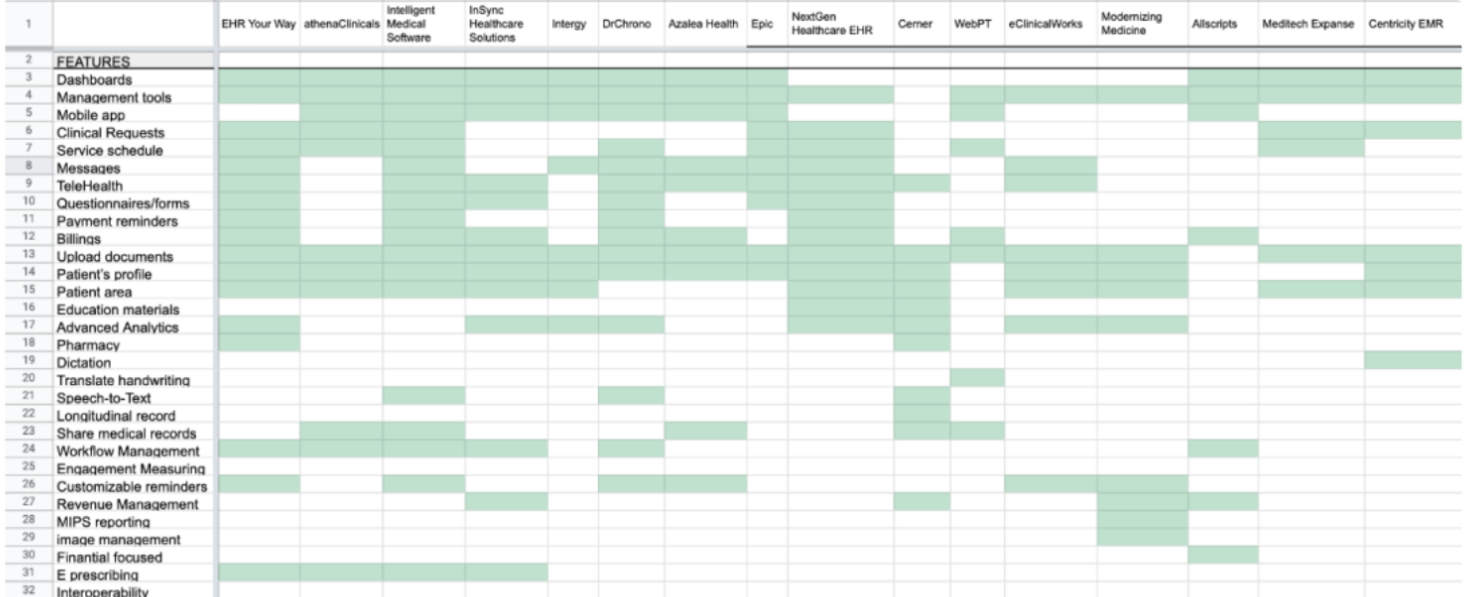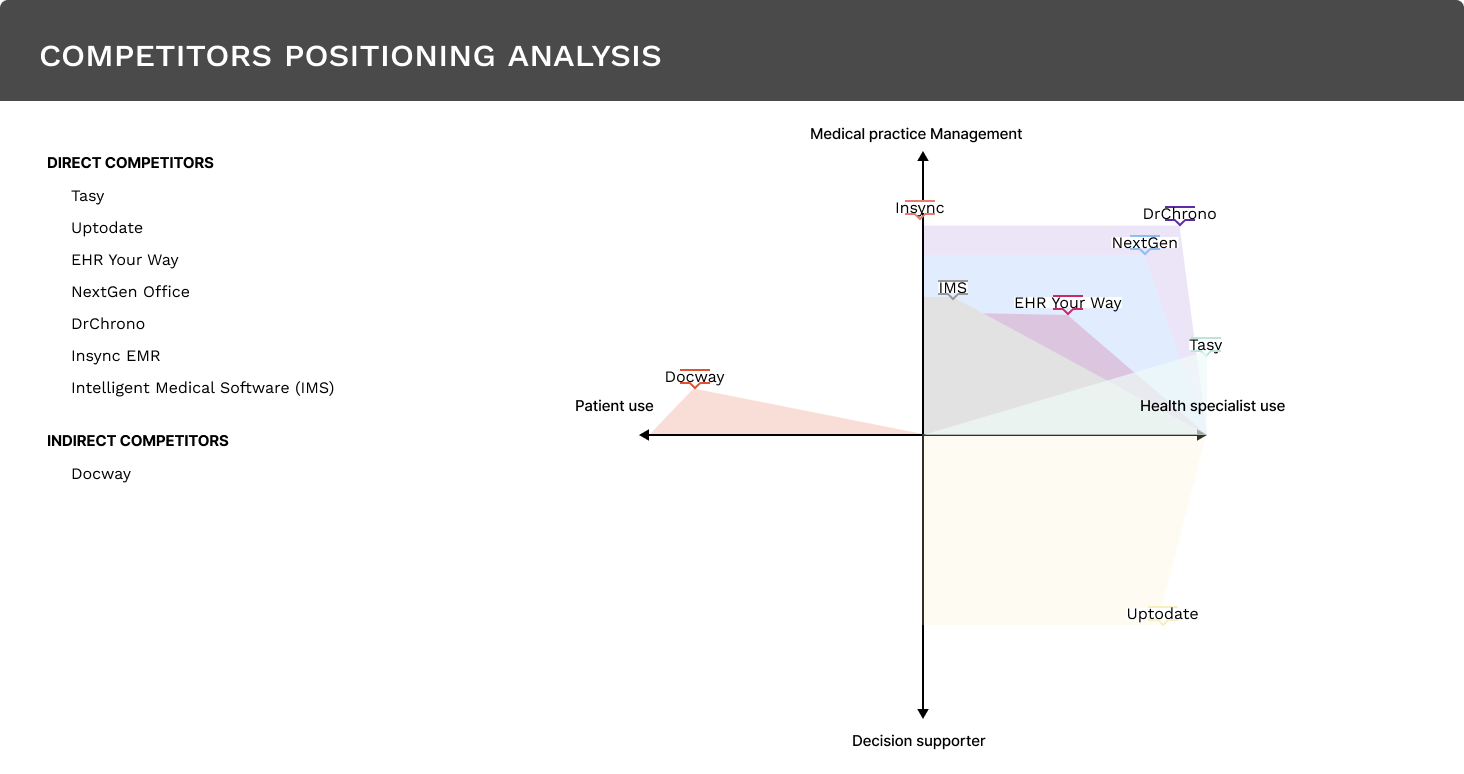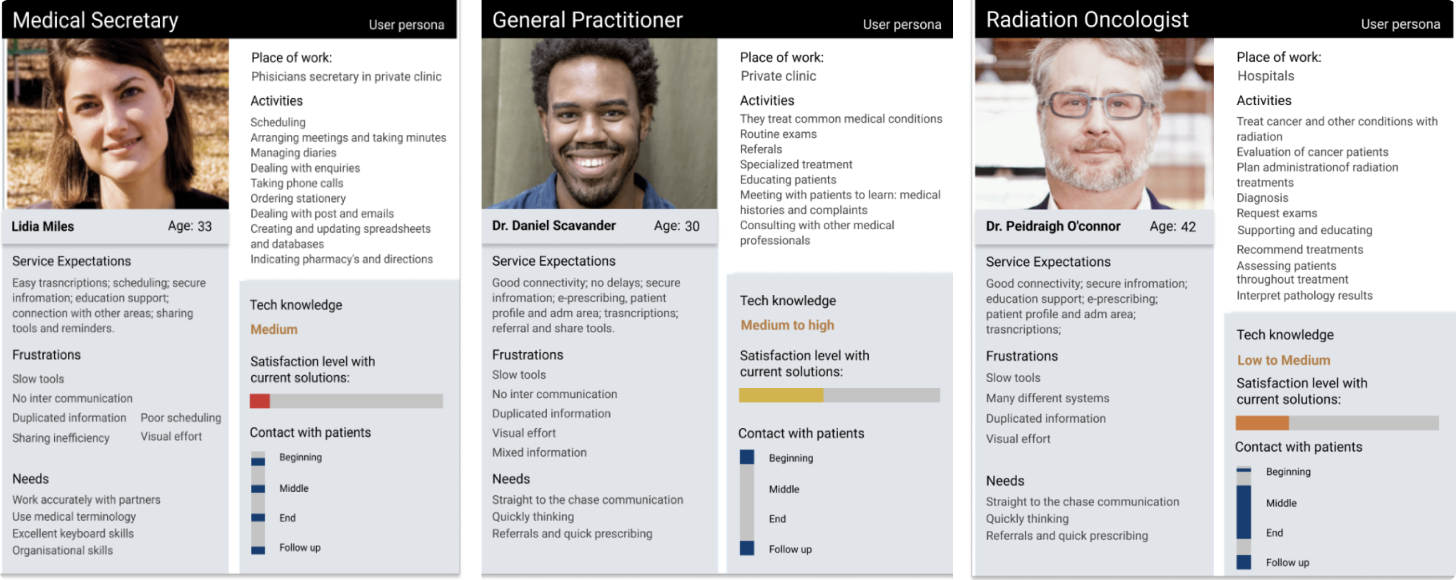
Product Designer
1 year
Figma; Miro;
Research&Discovery; Define Goals; Personas; User Journey Mapping; Concept Generation; Prototyping; Usability Testing; Iterative Design; Visual Design; User Acceptance Testing; Post-Launch Evaluation;
This case study offers a brief journey into the development of a digital solution dedicated to enhancing the healthcare journey for cancer patients. It elucidates the methodology utilized, which blends Service Design (SD) and User-Centered Design (UCD) principles, ultimately crafting a solution finely attuned to the genuine needs of users.
I was the only Designer within the company, so embarking on a journey that commenced with the project in its research and discovery phase was extremely important as it allowed me to immerse myself in a topic previously unfamiliar to me, collect and analyze data from interviews, and get familiar with the respective users/stakeholders. Subsequently, this project evolved to become the theme of my master's thesis.
Not all phases of the Process will be described here because of the extent of it but did my best to cover the most important aspects.
As it is a not-so-common topic, it is important to explain a bit of the area of this project. In the landscape of healthcare software development, our focus has been on creating a tailored solution to meet the intricate needs of physicians and patients. The project started with the recognition of a critical gap in the provision of digital tools for medical professionals. To reduce the scope of the initial MPV, we directed our efforts toward addressing the specific challenges faced by physicians and doctors specializing in prostate cancer.
Prostate cancer holds significant importance within the realm of oncology and healthcare for several reasons. Firstly, it ranks as the second most common cancer among men globally and the fourth most common cancer overall. (WCRF International, 2020). By focusing our software service on this demographic, we are targeting a substantial and underserved segment of the medical community.
The decision to prioritize prostate cancer in our software development endeavors was further reinforced by the invaluable support and expertise of a prominent physician, professor, and researcher specializing in this domain. As an investor and stakeholder in our project, his involvement not only lends credibility but also ensures that our software aligns closely with the clinical realities and best practices in prostate cancer care.
Jumping ahead to the future in order to explain better each part of the service, after the phase of discovery and research it was clear that the service was to be divided into 2 main products:
Web Clinic management tool and Health portal --> For Physicians, clinicians and medical staff;
Mobile patient care and treatment follow up app. --> For Patients and helpers/family members
The challenge that WhyzeHealth was addressing was developing a comprehensive digital healthcare solution for cancer care, specifically focused on prostate cancer treatment. The primary challenges they tackled were:
Fragmented Healthcare Communication Systems: The existing healthcare ecosystem had disconnected communication channels between patients and providers, with appointment scheduling requiring multiple methods (phone calls, emails, various software systems).
Inefficient Medical Workflows: Current Electronic Health Record (EHR) systems faced issues with data duplication, inadequate privacy frameworks, and limited interoperability, hindering efficiency and quality care delivery.
Complex Patient Journey Management: Prostate cancer patients navigate a complex healthcare journey involving multiple touchpoints, appointments, specialists, and treatment decisions, requiring significant coordination effort.
Inadequate Digital Tools for Specialists: Physicians specializing in cancer care lacked tailored software solutions that addressed their specific workflow needs, with existing solutions not optimized for oncology practices.
The following image illustrates what each one would cover as features and functions
.png)
Benchmarking:
Our investigation revealed a full hand of software solutions catering to both private and public healthcare sectors, available in various forms such as systems, mobile apps, and websites. To analyze and compare these offerings effectively, we applied benchmarking principles commonly used in industry to evaluate performance and market position. Focusing on our project's objective of aiding oncology physicians in data management and patient connectivity throughout the cancer journey, we conducted targeted searches using keywords like EHR, HDM, and HIM. We also considered software mentioned in interviews and surveys, filtering out solutions not relevant to physician or patient use. Survey findings highlighted specific software like Tasy, Docway, and Uptodate, providing insight into market trends and identifying potential competitors. Further analysis of these solutions across key design variables revealed prominent features but lacked distinctive interface design or usability enhancements.


Our research thoroughly examined existing software used in healthcare, focusing on features and suitability for doctors, especially those treating prostate cancer. Surveys revealed various software like Tasy, Docway, and Uptodate, helping us understand market trends and identify competitors. This analysis provided insights into user needs and areas for improvement. It guides the development of our software, aimed at improving prostate cancer care for doctors.
Our Objective The goal is to optimize medical workflows to improve patient experience and service delivery.
1. Challenges & Opportunities in EHR Systems
Challenges in EHR adoption:
2. Optimization of Medical Workflow & Patient Experience
3. Research Methodology & Ideation Phase
Key Takeaways
Three primary macro personas and one secondary persona were developed based on stakeholder interviews, user interviews, and survey data to represent high-level users of the product.
1.Medical Secretary (Lidia Miles): Lidia, a 33-year-old woman working in a private clinic as a medical secretary, serves as the primary point of contact. Her responsibilities include managing patient data, staying updated, and handling appointments. She has a medium understanding of technology but faces challenges with user-unfriendly systems.
2.General Practitioner (Doctor Daniel): Doctor Daniel, a 30-year-old man working in a private clinic, serves as a general practitioner. He manages a large number of consultation appointments and struggles with connectivity issues between systems, despite having good tech literacy.
3.Radiation Oncologist (Dr. Peidraigh): Dr. Peidraigh plays a crucial role in the treatment process for prostate cancer. He collaborates with other physicians to determine the best treatment for each patient. He faces challenges with using technology due to low tech literacy but requires tools for efficient communication and data storage.
Secondary Persona:
Patient: This persona, representing a patient managing multiple medications for the first time after a new diagnosis, seeks reliable information sources and may need support to understand treatment processes and side effects. They may use a mobile phone for information but may not be interested in online data entry.
These personas guide the design and development process by representing typical user behavior and requirements, ensuring a user-friendly system aligned with user needs. Additionally, user journey maps are integrated with the personas to enhance user experience throughout the product's lifecycle.

To close the scope of this case study a bit more let's focus on the journey of the physicians and their secretary in a specialized clinic.
The patient journey starts with a referral acceptance by the physician, followed by document scanning and appointment scheduling. During consultations, handwritten notes are preferred. Patients may proceed with treatment or be referred to specialists, with all data needing re-uploading for sharing. Invoices are printed for patients, including insurance details. GPs play a vital role in cancer care, handling diagnostics, treatment discussions, and side effects management. Radiation Oncologists follow common consultation patterns, from symptom presentation to diagnosis and prescription. Organizations may overlook steps in the patient journey, impacting the overall experience.

The extensive research conducted provides a comprehensive understanding of the complex prostate cancer patient journey and the healthcare ecosystem surrounding it. Several key insights emerge from our analysis:
This research has guided our focus toward a specific part of the patient journey—setting up and attending consultations—as the initial area for prototype development, with room for expansion as the product evolves. The proposed web portal and mobile application ecosystem aims to transform the fragmented healthcare communication landscape into a cohesive, user-friendly experience for both providers and patients.


Experience the full interactive prototype below: